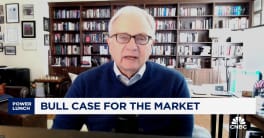The National Association of Home Builders (NAHB) urged Congress this week to move forward on legislation to improve energy efficiency and sustainability in housing without driving costs above manageable levels.
Jerry Howard, NAHB executive vice president and CEO testified before a House Financial Services Committee hearing on H.R. 6078, the Green Resources for Energy Efficient Neighborhood Act (or the GREEN Act) of 2008.
NAHB has been involved in voluntary green building since the early 1990s. Currently, the association is working with the International Code Council to complete a rigorous standards-developing process that will produce the first standard approved by the American National Standards Institute (ANSI) for green residential construction and remodeling � the National Green Building Standard�.
The GREEN Act, sponsored by Rep. Ed Perlmutter, (D-CO) provides incentives to lenders to provide lower interest loans and other benefits to consumers who build, buy, or remodel their homes or businesses to improve energy efficiency.
In addition the law would require Fannie Mae and Freddie Mac to finance energy efficient and location efficient mortgages such as buildings located near mass transit.
In prepared remarks for the Committee, Rep Perlmutter said that his bill's goal is to create a market for energy efficient and location efficient mortgages by making the GSE's, FHA and HUD eager to collect them.
This would be accomplished by amending the charters for Fannie and Freddie to buy, sell, service and otherwise deal in energy and location efficient mortgages and amending the Home Mortgage Disclosure Act to require data information for the number of and dollar amount of mortgages of single-family and multi-family housing which meet these standards.
HR 6078 would also require the FHA to insure $1 billion worth of energy efficient homes.
NAHB's Howard spoke to the Committee about ways to improve sustainability and energy efficiency in housing while still supporting housing affordability.
"Because federal housing programs are such a critical component of the nation's housing system, NAHB believes that it is important to ensure that the incorporation of sustainable building practices for these programs is accomplished in a thoughtful and practical manner," said Howard. "Also, it is important to maintain a balance between the goals of affordable housing development and maximizing energy efficiency."
Howard cautioned that setting overly stringent standards or unrealistic goals could boost the cost of building affordable housing to a level that is not sustainable over the long term.
He urged the members of the committee to keep certain principles in mind as they worked to adopt green criteria for federally assisted housing programs:
- Avoid naming specific green criteria in federal legislation that may seem sufficient today, but that could become quickly outdated or unworkable in the very near term.
- Provide necessary resources, including the additional staff and technology needed to implement the programs, as well as appropriations to help support the additional costs of building green.
- Structure new programs in a manner that allows them to be used easily with other housing programs without duplicative rules and regulations.
- Provide financial and other incentives to developers and builders of affordable housing to help them meet and even exceed green building goals.
- Work with builders, lenders, the GSEs, nonprofits, community groups, appraisers and others to develop attainable goals for supportive financing mechanisms such as energy-efficient and location-efficient mortgages as well as appraisal standards that appropriately recognize the value of green building.
- Develop educational materials to communicate best practices and promote sustainable federally assisted housing.







